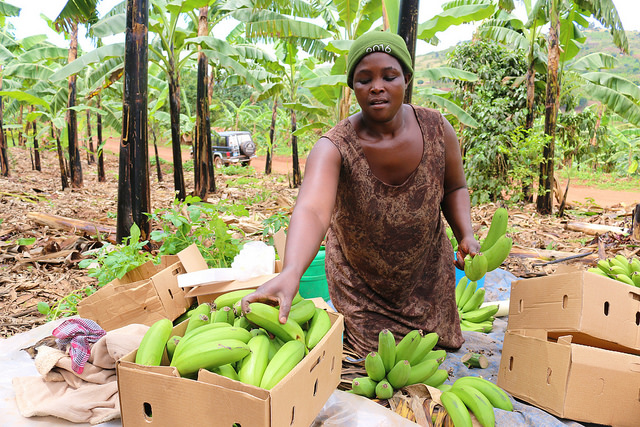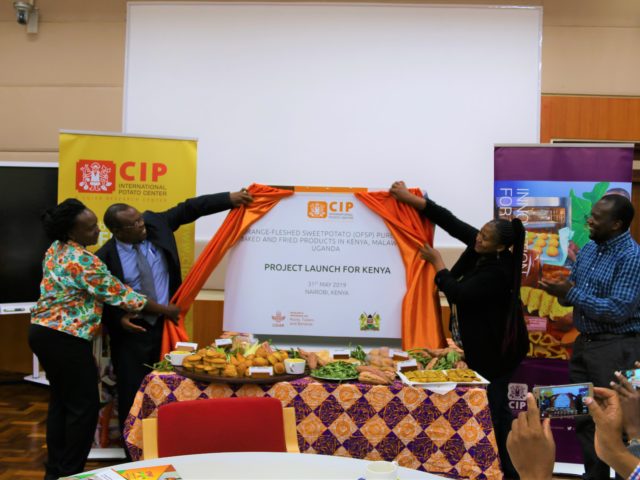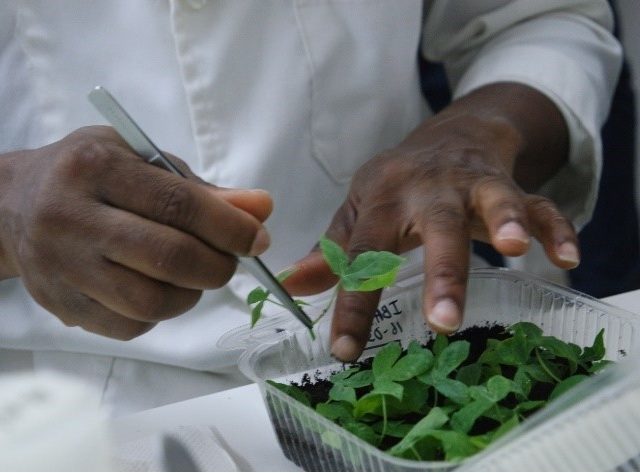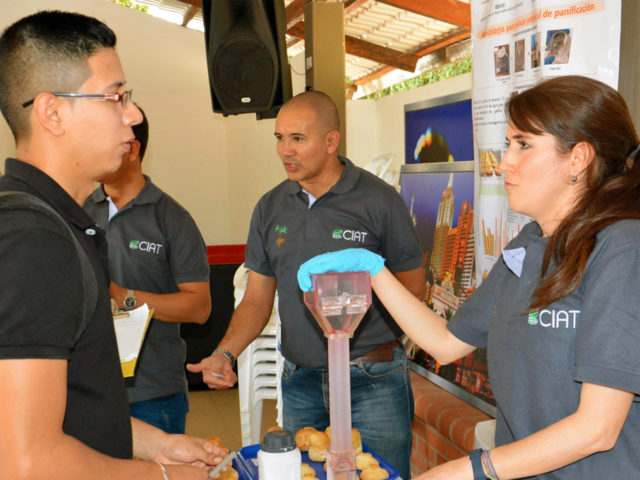Researchers collaborating under the ‘Expanding utilization of roots, tubers and bananas and reducing their postharvest losses’ (RTB-ENDURE) banana sub-project have identified solutions that will help Ugandan banana farmers and traders reduce income loss due to poor handling of their produce. The solutions were officially launched during the subproject’s final event which took place on 25-26 November 2016 in Masaka and Rakai Districts, Uganda.
Uganda produces about 10 million tons of banana per hectare per year , from an estimated 1.3 million hectares nationwide. For ordinary Ugandans, cooking banana is not just a staple crop but part of the socio-cultural fabric of the smallholder households and is used for medicine, bride price and marriage negotiations, birth and death rituals. The crop has been ranked number one for drought resilience in areas of the cattle corridor which are prone to prolonged droughts and frequent floods.
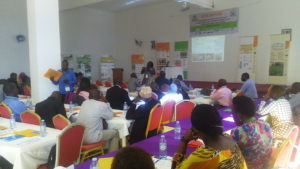
Participants listen during a session at the Final Event in Masaka. Photo by J.Turyatemba/Bioversity Internationa
In the event’s opening remarks, Dr Eldad Karamura, Bioversity International Regional Representative, said that in the last 15 years, NARO-Uganda and Bioversity International have collaborated on many banana research projects, largely in the pre-harvest sector of the value chain, including diversity conservation. He added that Bioversity International will move to further strengthen the postharvest sector to address hidden hunger in children and young mothers by promoting the consumption of vitamin A- and iron-rich bananas at the household level.
The banana sub-project is part of the larger RTB-ENDURE project implemented by CGIAR Research Program on Roots, Tubers and Bananas (RTB) with funding from the European Union and technical support of IFAD. The overall purpose of the RTB-ENDURE project is to improve food availability and income generation through enhanced postharvest management and expanded use of RTB crops in Uganda.
As part of the activities that took place to mark the final event of the project, a science day was held where research findings were disseminated to an audience consisting of researchers, banana farmers, civil society, government agencies, the media, agro-processors, exporters and local government officials.
At the event’s science day, Dr. Diego Naziri, RTB-ENDURE Project Coordinator, explained that bulkiness and high perishability of RTB crops coupled with poor postharvest handling and lack of processing and storage facilities result in a short shelf life, high postharvest losses and limited value addition.
The banana sub-project adopted the Participatory Market Chain Approach (PMCA) developed by the International Potato Center (CIP). Under this design, all actors (farmers, collectors, wholesalers, retailers, exporters, researchers, non-governmental organizations, etc.) in the banana value chain are brought together to jointly identify, analyse and exploit market innovations.
According to Dr. Enoch Kikulwe, the banana sub-project coordinator, 18.2% of all the cooking bananas produced in Uganda (corresponding to 47.3% of traded bananas) suffer postharvest losses. Of this amount, 8.9% of the bananas deteriorate completely and have no residual value while 9.3% only deteriorate partially and are sold at prices lower than their normal market rates. This particularly impacts retailers, who are largely women.
In order to maximize sales and income, farmers are advised to concentrate on banana varieties that already have an existing market and high untapped demand. The available identified varieties include Mbwazirume, Kibuzi, Musakala and Nakitembe.
In a gender analysis undertaken as part of the project by Susan Ajambo, a Gender Specialist with Bioversity International, it was found that women are concentrated in banana retail, which is the least profitable node of the value chain. The project therefore supported women to participate in the more profitable nodes of the value chain, such as in wholesale and the production of healthy planting material. According to Ajambo, both men and women have already embraced the macro-propagation technique and have established commercial chambers for selling clean banana plantlets of selected varieties.
Among the other areas, the project has also identified optimum harvest time and storage conditions for bananas, developed market linkages, trained hundreds of farmers in enhanced postharvest handling and piloted sales by weight.
During the final event, a tour to a commercial seed multiplication chamber and a mother garden at Ddwaniiro in Rakai district was also organised where farmer groups held practical demonstrations of the new techniques of multiplying popular banana variety cultivars for commercial farming.
A number of institutions partnered in the project, including the International Institute of Tropical Agriculture (IITA), CIRAD, NARO, KAIKA InvestCo, Uganda Fruits and Vegetable Exporters and Producers Association (UFVEPA), district local governments, and the Ssemwanga Group.
The project activities have been piloted in South-west Uganda in the districts of Rakai and Isingiro. This region produces 68% of the cooking bananas harvested in Uganda. The project began in 2014 and ended in December 2016.
Blog contributed by Joshua Turyatemba of Bioversity International
